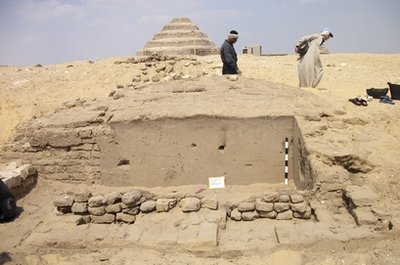Global General
Ancient mayor's 'lost tomb' found south of Cairo
(Agencies)
Updated: 2010-05-31 06:46
 |
Large Medium Small |
|
|
CAIRO - Archaeologists have discovered the 3,300-year-old tomb of the ancient Egyptian capital's mayor, whose resting place had been lost under the desert sand since 19th century treasure hunters first carted off some of its decorative wall panels, officials announced Sunday.
Ptahmes, the mayor of Memphis, also served as army chief, overseer of the treasury and royal scribe under Seti I and his son and successor, Ramses II, in the 13th century B.C.
The discovery of his tomb earlier this year in a New Kingdom necropolis at Saqqara, south of Cairo, solves a riddle dating back to 1885, when foreign expeditions made off with pieces of the tomb, whose location was soon after forgotten.
"Since then it was covered by sand and no one knew about it," said Ola el-Aguizy, the Cairo University archaeology professor who led the excavation. "It is important because this tomb was the lost tomb."
Some of the artifacts ended up in museums in the Netherlands, the United States and Italy as well as the Egyptian Museum in Cairo, providing the only clues about the missing tomb.
A team from Cairo University's archaeology department found the tomb during new excavations of the area that started in 2005, el-Aguizy said.
The inner chambers of the large, temple-style tomb and Ptahmes' mummy remain undiscovered.
In the side sanctuaries and other chambers they uncovered, archaeologists found a vivid wall engraving of people fishing from boats made of bundles of papyrus reeds. There were also amulets and fragments of statues.
